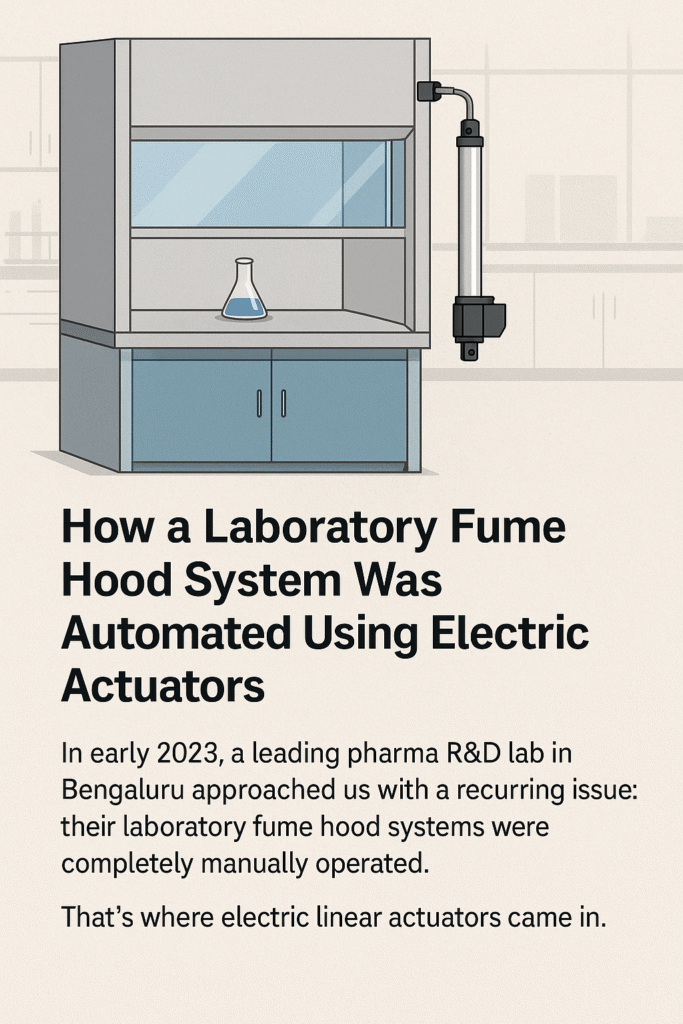In early 2023, a leading pharma R&D lab in Bengaluru approached us with a recurring issue — their laboratory fume hood systems were completely manually operated.
Researchers had to lift and lower the glass sash multiple times a day to control airflow and exposure to chemicals. Over time, this manual process became:
- Inconsistent
- Unsafe
- And a bottleneck to their cleanroom efficiency
They needed a smarter, safer way to control the sash — without touching it.
That’s where electric linear actuators came in.

The Problem
The lab manager told us,
“We have over 20 fume hoods. Our staff manually adjusts each one several times a day. It’s not just inconvenient — we’ve had a few close calls with chemical exposure due to delayed sash closure.”
They wanted:
- Automatic sash movement
- Zero contamination risk
- Remote and sensor-based operation
- Maintenance-free system
The Idea: Actuator-Based Automation
We proposed a solution using compact electric linear actuators integrated directly into the sash frame. These actuators would:
- Lift or lower the sash automatically
- Be controlled via touchless sensors or switches
- Work with the existing sash guides without redesign
We also added an optional timer and airflow sensor logic to auto-close the sash after inactivity.
Selection of the Right Actuator
For this application, we selected:
- Silent stroke actuators (for lab environment)
- 100mm stroke length
- 12V/24V DC operation
- Built-in limit switches
- Overload protection
- Clean finish for GMP compliance
They were small enough to mount inside the sash frame and strong enough to handle the glass weight.
Installation & Integration
We began with a pilot system on two hoods.
- The actuator was mounted vertically at one side of the sash
- A proximity IR sensor was fixed near the work area
- When someone approached, the sash would lift
- If no one was present for 2 minutes, the sash auto-closed
- Manual override switches were also provided as a backup
The wiring was routed safely without disturbing the airflow patterns.
The Outcome
The pilot was a huge success. Within a week:
- Operator touch was eliminated
- Airflow was consistently maintained
- Zero mechanical noise
- Lab technicians were able to work faster and safer
Within two months, the lab converted all 20 hoods to actuator-based control.
The client later shared:
“We didn’t just improve safety — we modernized the whole lab environment. Our audits are smoother, and our staff loves the hands-free operation.”
Conclusion
Electric linear actuators may look simple, but when applied in the right place — like a lab fume hood — they bring massive value.
If your facility still relies on manual sash operation, it’s time to upgrade. With the right actuator system, you can achieve:
- Safer environments
- Improved compliance
- Less fatigue for lab personnel
- A smarter, future-ready lab setup

Nice post